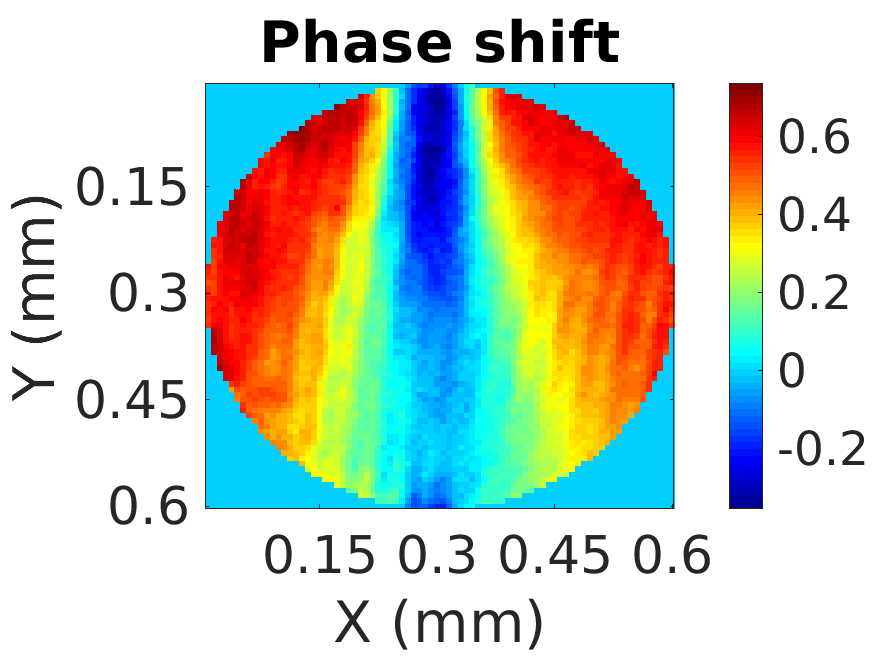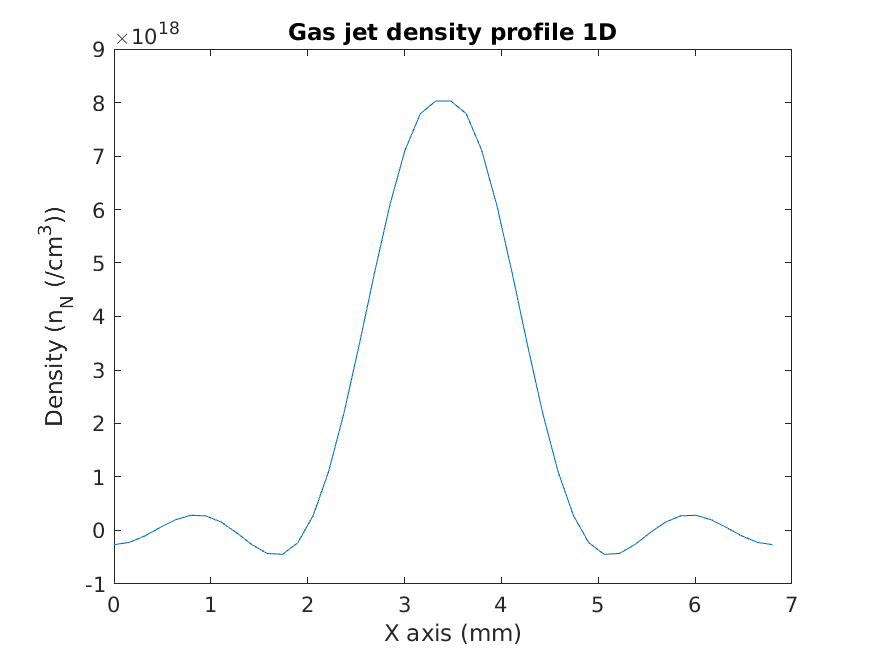Laser Wake-Field Acceleration
Published:
I’d like to share some of the results from my research at the SCAPA research group at the University of Strathclyde.
Background
The Scottish Centre for the Application of Plasma-based Accelerators (SCAPA), based in the University of Strathclyde is an advanced research facility that specialises in the study of laser-plasma interactions. The university’s research facilities include two powerful ultrashort lasers to study and develop groundbreaking compact particle acceleration technology, the applications of which range from radiation generation to the study of subatomic particle behaviour.
The aim of this experiment is to reliably measure the density profile of a gas jet that is propelled through a gas nozzle. In laser plasma interactions the density profile of the plasma is key to the generation of high intensity particle beams and so it is useful to have a reliable way to test the density profile of the ejected gas and ensure that it reaches a steady state before the ultra short laser pulse passes through it. To perform the density measurement of the gas a wavefront sensor can be used to measure the phase shift of the laser light after it interacts with the gas jet.
Laser-Plasma interactions
The process of using laser plasma interactions to accelerate electrons was first suggested by T. Tajima and M. Dawson. As new techniques were discovered to produce very intense short laser pulses and it became possible to reach intensities of $10^{18} $W/cm$^{2}$ different schemes of the technology have been researched for their potential uses in the study of particle physics and applications in science research and industry.
Tajima and Dawson on their paper published in 1979 were the pioneers on laser based plasma acceleration. They described the possibility of acceleration of electrons using the wakefield generated in a plasma by a short high intensity laser pulse. Dawson was also one of the first to develop particle-in-cell code to simulate the complex behaviours of particle systems.
The next step in the development of this technology came with the discovery of chirp pulse amplification (CPA) by Donna Strickland and Gerard Monrou as it allowed for the creation of high-power ultra-short laser pulses in the range of $10^{18}$ W/cm$^{2}$. As the quality of laser pulse generation improved, various university research teams were able to produce high energy electron bunches using laser plasma acceleration (LPA) techniques.
The technology is developing to be an alternative to the conventional electric-field driven particle accelerators. Its most important feature being that the plasma is able to sustain high accelerating fields and this can reduce kilometres long accelerators to metres.
Laser wakefield acceleration (LWFA)
A high intensity ($\gtrsim 10^{17} W/cm^{2} $) short laser pulse ($\lesssim$ 1ps) induces a plasma wave as it passes through under-dense plasma ($(\lambda / \lambda_{p})^{2} \ll 1$). Then the ponderomotive force exerted by the laser expels the electrons while the ions remain almost stationary. The separation of the charges then creates a restoring coulomb force from the positive ions which attract the electron batch. As a result, it is possible to accelerate electrons non-linearly to high velocities.
Plasma beat-wave acceleration (PBWA)
The plasma wake is generated by two long laser pulses separated by the plasma frequency. The plasma beat-wave acceleration scheme was proposed by Tajima and Dawson as an alternative to LWFA since ultra-short intense laser technology was not available in 1979. It consists of applying two laser pulses that resonate i.e $\delta w = w_{1} - w_{2} \approx w_{p}$. When the resonance condition is met it can produce large amplitude plasma waves. It is limited by diffraction and pump depletion.
Experimental Details
The goal of this experiment is to perform an accurate measurement of the density profile of a pressurised gas jet ejected though a nozzle into a vacuum chamber. This is especially relevant in experiments and simulations pertaining laser-plasma interactions such as the LWFA experiments performed in the A2 beam-line at the SCAPA facilities.
For the experiment a SID4 Wavefront sensor was used, as well as a laser light source and a set of imaging lenses. The light beam experiences a phase shift due to the local differences in refractive index of the gas due to its density variations. This phase shift is measure by the SID4 wavefront sensor and thus we are able to use mathematical tools to find out the density of the gas.
In order to calculate the refractive index from the phase shift we can perform a Inverse Abel transformation on the data from the assumption that the gas jet is fairly axisymmetric. The Lorentz-Lorentz equation relating the refractive index to the density of the gas.
\[n = \sqrt{1 + \frac{3A}{N_a} N}\]Experimental Setup

Results
Using the data gathered by the wavefront sensor we can calculate the phase shift of the laser while reducing the background noise by subtracting the background takes. In the final results the highest standard deviation was $\sigma \approx 0.025$ with data values between $\pm 0.1$.
By subtracting the phase values measured we can calculate the phase difference of the light interacting with the gas jet by taking the average value of the gathered data.
After the Fourier-based inverse Abel transformation and using the Lorentz-Lorentz equation taking into account that the gas is Nitrogen we obtain a density map where the density profile can be clearly identified.
| Density Map | Measured Phase Shift |
|---|---|
 |  |
So we find the resulting density profile of the gas jet:

In addition, we perfomed some Laser Wakefield Acceleration simulations on the EPOCH software, so I might update the post with those details.
Thanks for reading!
